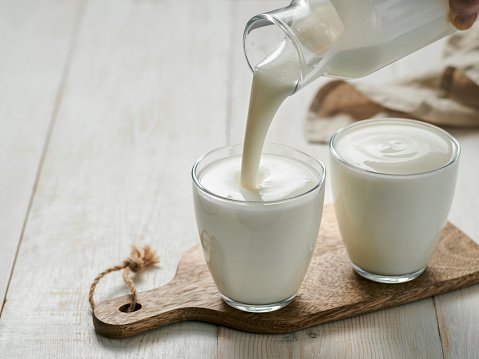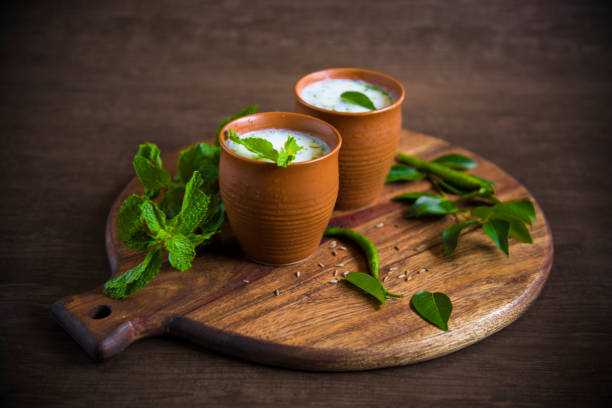Alternative Ways On How To Make Butter Milk For Recipes

For a moment, let's discuss about buttermilk. Buttermilk produces deliciously soft, light, and sour baked delights. Buttermilk can be used in pancake and muffin meals
What exactly is buttermilk?
Buttermilk was once thought to be the fermenting liquid remaining after processing cream into butter. Typically, buttermilk bought at the store or groceries shop is produced from milk with lactic bacteria introduced to make lactic acid.
How to make Butter milk from Scratch
It's mostly about finding the right balance! Make it exactly as you want it!
- 1 cup milk to 1 teaspoon lemon juice or vinegar ratio
- Allow 5-10 minutes for the mixture to solidify and develop the tang flavor.

Buttermilk Benefits
Buttermilk is one of the few culinary basics that can be used in so many different ways.
Buttermilk Has Anti-Acidity Properties
It is, however, a useful remedy that can help you relieve heartburn. Buttermilk is a probiotic food. Probiotics contain healthy bacteria that minimize gas build-up and discomfort, which are common symptoms of acid reflux.
It also enables nutrients and foods to be properly digested and processed, which prevents or significantly minimizes the risk of acidity.
Weight Loss and Cholesterol Reduction
Buttermilk has a very low-fat level since it offers a variety of vitamins and minerals without adding calories to our diet. Buttermilk also contains vitamin B2, often known as riboflavin, which can aid in metabolism.
Strengthens the bones
Buttermilk is high in phosphorus and calcium, which are both essential for strong bones.
Buttermilk can help to combat shortages and strengthen bones. Boosting bone health is, of course, a significant buttermilk benefit.
Let's have a look at how to make butter milk and how its component can affect your food:
Thickness
Because buttermilk is thick, it doesn't drain as fast during baking
Aroma
Buttermilk, unlike ordinary milk, has a unique sour flavor. Though other ingredients most often equal out the sour taste, it adds brightness to somewhat bland meals.
This leads to a thick, creamy texture. Furthermore, a high acid concentration disintegrates gluten and softened the finished product.
Leavening
When the acids in butter milk mix with bases (such as baking soda), carbon dioxide is produced. This gas produces air bubbles, which give baked foods a light, airy appearance.
Buttermilk substitute
Yogurt
Yogurt is a wonderful alternative for buttermilk in dishes since it has a close similarity to buttermilk and is readily available in most kitchens. Yogurt is made from milk that has been fermented by bacteria.
In a 1-to-1 ratio, yogurt usually works as a buttermilk alternative. To put it another way, if a recipe says for 1 cup of buttermilk, you may just use 1 cup of plain yogurt instead.
Nonetheless, because buttermilk has a more watery texture than yogurt, the yogurt may sometimes be too sticky for some recipes.
To thin out your recipe, combine 3/4 cup of plain yogurt with 1/4 cup water. Use the same way you would for buttermilk in your dishes.

Lemon or Vinegar
Whenever it relates to buttermilk alternatives, combining lemon or vinegar with milk has been one of the simplest and most straightforward ways to imitate buttermilk.
Given that buttermilk is dairy-based, extremely acidic, and chemically comparable to milk, it is completely understandable to be able to manufacture replica buttermilk using both an acid and a dairy-based component.
Ingredients
- 1 tbsp heavy cream or 1 tbsp whole or 2% milk
- 1 tablespoon of lemon juice (freshly squeezed) or distilled white vinegar
Equipment
- A spoon for stirring
- Measuring spoon
- Measuring cup
Instructions
Blend the milk or cream and the acid in a mixing bowl. In a measuring cup, combine the milk or cream and lemon juice or vinegar.
Allow for a 5- to 10-minute rest period. Allow 5 to 10 minutes for the mixture to get to room temperature. When it's done, the milk will be somewhat thickened and little curdled chunks will appear.
This alternative will not thicken as much as real buttermilk, but you will not detect any curdled parts in the final product.
Use the buttermilk in this recipe. In your recipe, use this alternative (including curdled parts) in place of buttermilk.
Milk and Cream of Tartar
Cream of tartar, also known as potassium bitartrate, is yet another basic material that can be used with milk to form a buttermilk alternative.
This powdered white substance is a byproduct of the winemaking process and has no flavor
1 3/4 teaspoons (5 grams) cream of tartar per 1 cup (237 ml) milk makes a buttermilk alternative.
When cream of tartar is mixed straight into milk, it tends to stick. As a result, it's preferable to combine the cream of tartar with the rest of the dry ingredients in your recipe before adding the milk.
Similarly, to avoid clumping, whisk 2 teaspoons (30 ml) cream of tartar with 2 tablespoons (30 ml) milk, then add this combination to the rest of the dairy.
How to Store Homemade Buttermilk
In the fridge, homemade buttermilk will last around 7-10 days, much like store-bought buttermilk.
Freeze
As strange as it may seem, Buttermilk freezes wonderfully. A sealed well can endure up to three months.
The liquid remaining after processing butter from cultured cream contains real buttermilk. However, cultured buttermilk, which you can buy in the store, is created by boiling whole or low-fat milk with a bacteria culture added to it. After that, allow it to ferment for around 12 hours.
Author Bio
This user has not submitted a user bio yet
Article Comments
No Comments!
At present there are zero comments on this article.
Why not be the first to make a comment?
Similar Articles
Sponsor
Search Articles
Experts Column
Latest Articles
Featured Articles
Most Popular Articles












